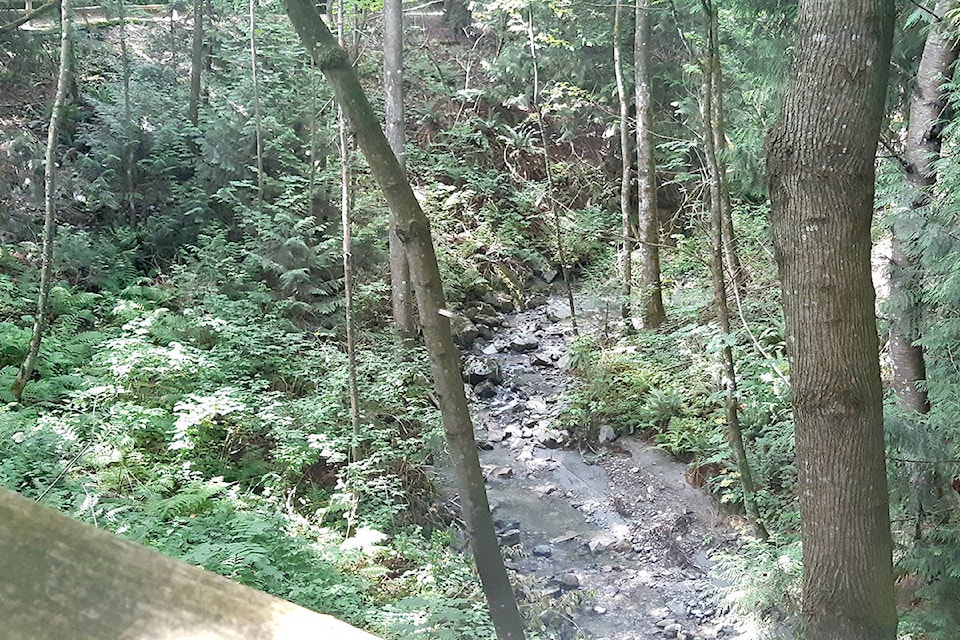The watershed that collects the bulk of central Abbotsford’s rain and run-off is in poor environmental health thanks to decades of development and losses of vegetation.
The Willband Creek watershed collects the run-off for most of central Abbotsford between McCallum and Clearbrook roads, including the historic downtown and the city centre area along South Fraser Way. It also includes Mill Lake.
The city is working to develop a long-term stormwater management plan for the area, and staff reported this week that the area would be defined as an “extremely impacted watershed.” That finding, staff reported, “could be expected, given the loss of intact riparian forest and high imperviousness.”
The watershed has high-quality parts, the report says, but those are “outweighed by the poor-quality components.” Nine-tenths of Abbotsford’s urban core is covered by impervious surfaces like pavement and roofs.
Horn Creek, Boa Brook and Thiessen Creek are in better health, the report says. Horn Creek, though, has a separate set of challenges, with erosion causing a medium-to-high risk of bank stability failures along the watercourse.
The city has worked in recent years on protecting the environment, but the report says “this has not been a seamless effort.” That is, in part, because property owners and developers seem to see adhering to the city’s environmental-protection rules as an expense and burden, rather than an important way to preserve the area’s ecology. “Getting property owners on side will be vital to repairing the watershed’s health,” a staff report says.
While past development is fingered for the current health of the watershed, council heard that new developments will provide some of the best opportunities to improve things.
Climate change and resulting heavier rain events have been deemed to be the largest long-term threat to the health of the watershed and erosion problems. Those increased challenges, though, can be mitigated in large part by “implementing effective source controls through redevelopment,” staff said.
The idea, essentially, is that older properties weren’t developed with runoff and stormwater flows in mind. New developments are better designed, and can reduce the amount of water that ends up flowing through the narrow ravines and streams that drain the region, staff believe. Things like parking lots can feature natural elements that are aesthetically pleasing but actually focused on diverting water into the ground, rather than into storm pipes.
But improvements won’t happen overnight.
“It will take time for the redevelopment of the urban area to show benefits,” Tyler Bowie, the city’s director of infrastructure planning, told council.
Beyond development with more trees and less pavement, the city can consider several other ways to improve both the ability of the storm sewers to drain waters during storms and bolster the environmental health of the watershed. Those include studying and improving critical pipes and detection ponds.
Do you have something to add to this story, or something else we should report on? Email:
tolsen@abbynews.com
